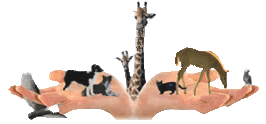7 Harmful Ingredients in your soap? Really?
Many people don't realize how harmful these chemicals can be, that is exactly what they are chemicals. Take a look if any are in your personal care products, I can guarantee they are, because they are cheap and the manufactures make a huge profit at the expense of your health. Look at this list below and at the end of the list I will provide a link that you can go to, to find a safer solution for you, your family, and even your pets.
Certain chemical ingredients can potentially cause problems for your skin when applied as a liquid or bar soap and are best avoided.
The 7 ingredients topping the "To Avoid" list include…
1. Sodium Lauryl/Laureth Sulfate (SLS/SLES)
Sodium lauryl sulfate is a surfactant, detergent and emulsifier used in thousands of cosmetic products, as well as in industrial cleaners. Present in nearly all shampoos, toothpastes, body washes and cleansers, liquid hand soaps, laundry detergents and bath oils and bath salts.
Although SLS originates from coconuts, the manufacturing process results in SLES/SLS being contaminated with 1,4 dioxane, a carcinogenic byproduct.
SLS is the sodium salt of lauryl sulfate, and is rated by the Environmental Working Group's (EWG) Skin Deep Cosmetics Database as a "moderate hazard."
SLS breaks down your skin's moisture barrier, easily penetrating skin, and allowing other chemicals to penetrate by increasing skin permeability by approximately 100-fold.
Combined with other chemicals, SLS becomes a "nitrosamine", a potent class of carcinogen.
Research studies have linked SLS to skin and eye irritation, organ toxicity, reproductive and developmental toxicity, endocrine disruption, neurotoxicity, cellular changes, possible mutations and cancer.
2. Dioxane
Common in a wide range of products as part of PEG, Polysorbates, Laureth, and ethoxylated alcohols. These compounds are usually contaminated with high concentrations of highly volatile 1,4-dioxane which is easily absorbed through your skin.
This "probably carcinogen to humans" substance has received a "high hazard" rating from EWG's Skin Deep and is especially toxic to the brain, central nervous system, kidneys and liver.
A synthetic derivative of coconut, watch for misleading language on labels, stating "comes from coconut".
Avoid any product with indications of ethoxylation, which include: "myreth," "oleth," "laureth," "ceteareth," any other "eth," "PEG," "polyethylene," "polyethylene glycol," "polyoxyethylene," or "oxynol," in ingredient names.
3. Parabens
Widely used as preservatives in an estimated 13,200 cosmetic and skin care products, parabens have been connected with breast cancer in studies.
They have hormone-disrupting qualities mimicking estrogen, and can interfere with your body's endocrine system. Studies have shown that parabens can affect your body much like estrogens, which can lead to diminished muscle mass, extra fat storage, and male breast growth.
The EPA has linked methyl parabens in particular to metabolic, developmental, hormonal, and neurological disorders, as well as various cancers.
4. Propylene glycol
A common ingredient in personal care products, it's been shown to cause dermatitis, kidney or liver abnormalities, and may inhibit skin cell growth or cause skin irritation.
Also found in engine coolants, antifreeze, rubber cleaners, adhesives, and paints and varnishes.
5. Diethanolamine or DEA
DEA readily reacts with nitrite preservatives and contaminants to create nitrosodiethanolamine (NDEA), a known and potent carcinogen.
DEA also appears to block absorption of the nutrient choline, vital to brain development.
6. Fragrance
Toluene, made from petroleum or coal tar, is found in most synthetic fragrances. Chronic exposure is linked to anemia, lowered blood cell count, liver or kidney damage, and may affect a developing fetus.
Synthetic fragrances can also be drying and irritating to your skin.
7. Triclosan
The antibacterial agent added to many liquid hand soaps to help kill germs. Triclosan is suspected of contributing to the growing problem of antibiotic resistance.
Triclosan Can Transform Into Something Even More Dangerous
Here's something else you may not know about that innocent-looking bottle of liquid hand soap sitting next to your sink.
When triclosan mixes with the chlorine in your tap water, chloroform is formed, which the Environmental Protection Agency (EPA) has classified as a probable human carcinogen.
And when combined with other disinfection byproducts (DBPs) in your tap water, this chloroform can raise the concentration of dangerous trihalomethanes (THMs) above the EPA's maximum allowable amount.
Trihalomethanes (THMs) are Cancer Group B carcinogens, meaning they've been shown to cause cancer in laboratory animals. Disinfection byproducts (DPBs) have also been linked to reproductive problems in both animals and humans.
Not only do you absorb them into your skin, these antimicrobial chemicals flow down your drain, contaminating the environment and food chain.
So, let me ask you… do you really want to put triclosan, SLS, parabens, dioxane, DEA, toluene, synthetic fragrances and propylene glycol (along with other chemicals we haven't even talked about here) on your skin?
In my opinion, you're better off switching to skin care products made of natural plant names you recognize, can pronounce, and could even eat (if you had to).
As promised the link, www.youngliving.org/468819 once there go to products, then personal care, and check it out. Oh, by the way, you will see the retail prices, I can get you started with wholesale prices too.
Charla
